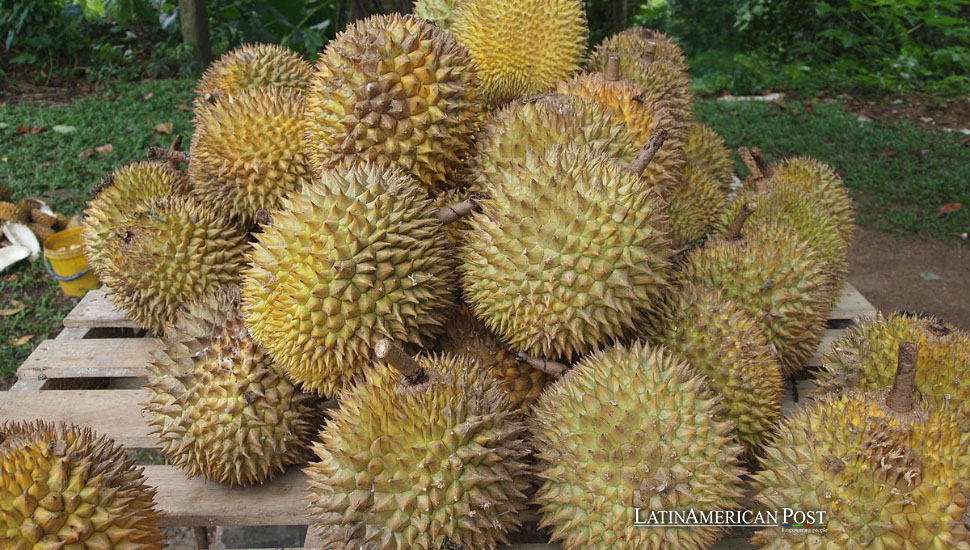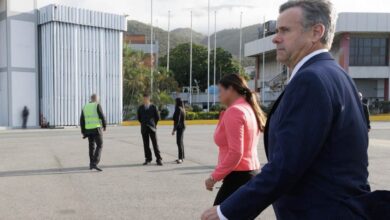How the the World’s Smallest Fruit is Reshaping Coffee in Latin America

As global coffee prices soar, an unlikely player is influencing the market: durian, the world’s smelliest fruit. In countries like Vietnam, its cultivation is reshaping the coffee landscape, and Latin American coffee growers, from Colombia to Brazil, are feeling the effects.
A Smelly Fruit, a Perfect Storm for Coffee Prices
For many coffee lovers, paying $7 for a cup of coffee seems outrageous. Yet, the rising price of coffee may soon make this a reality. The BBC reports that economic pressures, crop failures, and the rise of a notorious durian fruit contributed to this surge.
It began with the devastating frost in Brazil in 2021, the world’s largest producer of Arabica beans. This unexpected weather event wiped out vast swathes of coffee crops, creating a significant shortfall in the global market. As buyers scrambled to find alternatives, they turned to Vietnam, the leading producer of Robusta beans, often used in instant coffee. However, Vietnam also grappled with its worst drought in nearly a decade, affecting coffee yields. As if that weren’t enough, many Vietnamese farmers have begun switching their crops from coffee to durian, a smelly, spiky fruit gaining massive popularity in China.
According to the BBC, Vietnam’s durian exports to China almost doubled between 2023 and 2024, and many farmers are abandoning their coffee crops in favor of this lucrative alternative. Durian is estimated to be five times more profitable than coffee, and as farmers chase these higher profits, coffee stockpiles are dwindling. In June 2024, Robusta coffee exports from Vietnam were down 50% compared to the previous year, with stocks “near depleted,” according to the International Coffee Organization. This has only exacerbated the tightness in the global coffee market.
A coffee market analyst, Judy Ganes, explained to the BBC that this “perfect storm” of environmental and economic factors has pushed Robusta and Arabica beans to near-record highs in commodity markets. As a result, many coffee drinkers face higher prices for their morning caffeine fix. However, the repercussions of these shifts go beyond your local café—they also profoundly affect coffee growers in Latin America.
The Ripple Effect on Latin American Coffee Growers
While Vietnam and other Southeast Asian countries are seeing a dramatic shift in their agricultural focus, coffee growers in Latin America are stepping up to fill the gap. Colombia, Brazil, Peru, and Ethiopia have all increased their coffee exports in response to Vietnam’s shrinking supplies. However, these countries have not been able to ultimately make up for the shortfall, leading to a continued strain on the global market.
Farmers feel pressure and opportunity in Colombia, one of the world’s largest coffee producers. The demand for Robusta beans has risen dramatically, pushing prices higher and giving growers a chance to increase their profits. But there’s also a challenge: how to meet this growing demand without succumbing to the same environmental and economic issues plaguing Vietnam.
Colombian coffee growers are no strangers to the difficulties posed by climate change. Increasingly erratic weather patterns have made predicting and planning for harvests harder, and many farmers struggle with reduced yields. According to the BBC, coffee consultant Will Frith has noted that “climate change has been affecting the development of coffee plants,” which is particularly troubling for a country that relies so heavily on its coffee exports.
The situation in Brazil is similar. While the country remains the largest producer of Arabica beans, it too has faced significant challenges in recent years. The 2021 frost decimated coffee crops in some regions, and the country is still recovering. Coffee growers are now anxiously awaiting the upcoming spring crop, which, according to Brazilian coffee expert Felipe Barretto Croce, could determine the future of global coffee prices. “What everyone is looking at is when the rains will return,” Croce told the BBC. If the rains come too late, it could spell disaster for next year’s crop, further tightening the already-stressed market.
Brazil and Colombia Adapting to a Changing Market
In Brazil and Colombia, coffee growers adapt to these challenges differently. One strategy gaining traction is the concept of a “green premium,” a small tax levied on coffee to help farmers invest in regenerative agricultural practices. This approach, supported by figures like Felipe Barretto Croce, aims to protect and sustain farmlands, ensuring that coffee production can continue despite the challenges posed by climate change.
The idea is simple: by encouraging sustainable farming practices, coffee growers can improve the resilience of their crops, making them less vulnerable to the unpredictable effects of climate change. This, in turn, could help stabilize coffee yields and prices, providing a more secure future for both farmers and consumers.
In addition to sustainable farming, many coffee growers in Latin America are also exploring ways to diversify their crops, much like their counterparts in Vietnam. However, rather than switching to durian, some farmers are experimenting with other high-value crops, such as avocados or cacao, which can be grown alongside coffee. This approach allows them to hedge their bets, ensuring they can continue earning a living even if coffee prices or yields fluctuate.
At the same time, there’s a growing focus on quality. As the global supply of lower-quality coffee beans shrinks, high-quality, specialty coffee is becoming more attractive to consumers. Croce pointed out to the BBC that “the cost of lower-quality beans rising means high-quality coffee may now be seen as better value.” This shift in consumer preferences is good news for farmers in countries like Colombia and Brazil, known for producing some of the world’s best Arabica beans.
The narrowing price gap between specialty coffee and more commercial coffee is already being felt. As coffee drinkers become more discerning, they are willing to pay a premium for a high-quality cup of coffee. This could help offset some coffee growers’ challenges, providing them new opportunities to thrive in a changing market.
Coffee, Durian, Climate, and Innovation
So, what does the future hold for coffee growers in Latin America and worldwide? The situation is complex, but one thing is clear: the days of cheap coffee may be numbered. According to the BBC, some experts believe we could see prices rise even further if climate change affects coffee-growing regions. A study from 2022 concluded that even if drastic action is taken to reduce greenhouse gas emissions, the area most suitable for growing coffee could shrink by 50% by 2050.
This grim forecast has led many in the industry to explore new solutions, from sustainable farming practices to crop diversification. However, the shift away from coffee in some regions, like Vietnam, adds another layer of complexity. The rise of durian as a profitable alternative to coffee shows just how volatile agricultural markets can be. While Vietnamese farmers are cashing in on this trend, how long it will last—or the long-term consequences for global coffee supplies is unclear.
For coffee drinkers, the immediate concern is whether these changes will affect their wallets. As Paul Armstrong, a UK-based coffee wholesaler, told the BBC, “It’s a perfect storm at the minute.” Prices have already risen and may continue to climb as the market adjusts to the changing landscape. However, it’s worth noting that the cost of coffee beans only makes up a small portion of the price you pay for a cup of coffee. Other factors like rent, labor costs, and inflation often drive higher prices.
That said, the future of coffee may depend on the industry’s ability to innovate and adapt. Some in the industry call for more investment in regenerative agriculture, while others focus on improving the quality of the coffee itself. The rise of specialty coffee could be a bright spot in an otherwise challenging market, providing both growers and consumers with new opportunities to appreciate and enjoy this beloved beverage.
Ultimately, the story of coffee is a story of resilience. From Brazil’s frost-damaged fields to Vietnam’s drought-stricken farms, coffee growers have faced countless challenges throughout history. Yet, they have always found ways to adapt and survive. As the world’s most miniature fruit reshapes the coffee industry on the other side of the planet, Latin American coffee growers are again rising to the challenge, finding new ways to thrive in a rapidly changing world.
Also read: Latin America’s Ice Cream Obsession: A Flavorful Exploration
The unlikely rise of durian as a competitor to coffee, coupled with the ongoing challenges posed by climate change, is reshaping the global coffee market. For coffee growers in Latin America, this presents both challenges and opportunities. By embracing sustainable farming practices, diversifying their crops, and focusing on quality, they are positioning themselves to weather the storm and continue providing the world with its much-needed caffeine fix. And as the BBC reports, the future of coffee will depend on the ability of farmers and consumers alike to adapt to this new reality.





